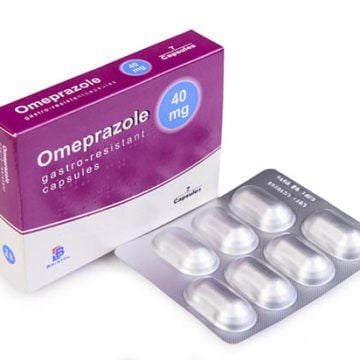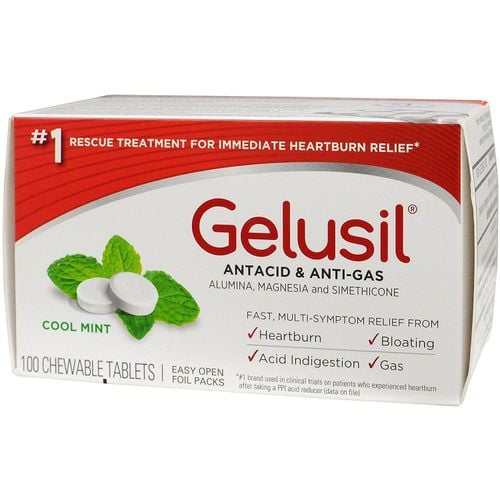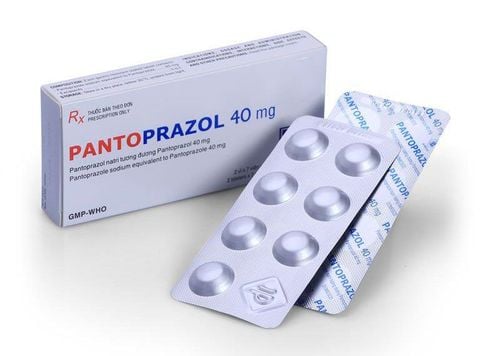This is an automatically translated article.
Seosaft drug 1g is an antibiotic drug used to treat bacterial infections such as infectious bronchiectasis, pyelonephritis, lung abscess, sepsis,... To achieve the therapeutic effect such as: Expectedly, patients need to follow all instructions of the doctor during the course of taking Seosaft.
1. What is Seosaft 1g drug?
Seosaft 1g is a drug used by doctor's prescription for bacteremia, infectious bronchiectasis, bronchitis, pneumonia, lung abscess, secondary chronic respiratory infection, pyelonephritis ,.... caused by susceptible strains of bacteria. Currently, Seosaft 1g drug is manufactured by Kyongbo Pharm Co., Ltd - Korea and is widely distributed in many countries.
Seosaft medicine 1g is prepared in the form of ivory white powder for injection, a box includes 10 vials with the main ingredient being Ceftezol Sodium, 1g. In addition, each Seosaft potion contains other excipients just enough.
2. What effect does Seosaft 1g have?
2.1 Uses of the drug Seosaft 1g The main active ingredient Ceftezol in Seosaft is a broad-spectrum bactericidal antibiotic, belonging to the Cephalosporin group of drugs that are effective against both Gram-negative and positive bacteria. According to research, Ceftezol has activity against bacterial strains such as E.Coli, S.aureus, S.pneumoniae, Proteus mirabilis and most strains of Penicillinase-producing Staphyloccoci.
2.2 Indications to use Seosaft 1g Seosaft is usually prescribed by doctors to treat the following cases:
Bronchitis. Sepsis. Pneumonia or lung abscess. Bronchiectasis occurs due to bacterial infection. Secondary chronic respiratory infections. Kidney disease. Pyelonephritis. Peritonitis. Cystitis caused by susceptible bacteria. In addition, Seosaft 1g drug is also highly appreciated by doctors for its ability to reduce the rate of infection after surgery for patients who undergo surgery and are at high risk of infection. On the other hand, Seosaft is also effective for severe postoperative infections and patients' reduced resistance to infections. In order to reduce the risk of infection, it is best for patients to use Seosaft immediately before surgery and during the postoperative period. Seosaft 1g drug is only allowed to be used when prescribed by a doctor, so patients need to avoid self-medication.
2.3 Contraindications to using Seosaft 1g Do not use Seosaft for the following cases:
Contraindicated for patients with a history of allergy or hypersensitivity to Ceftezol or other Cephalosporin antibiotics. Do not use Seosaft for people with a history of shock to this drug. Seosaft should not be used in patients who are hypersensitive to the anesthetic Lidocaine (in case of IM injection).
3. Dosage and recommendations for using Seosaft 1g
3.1 Dosage of Seosaft Medicine Seosaft medicine will be taken according to the dose recommended by the doctor after assessing all aspects of the patient, including the age and symptoms of the disease at the present time. Each patient will have a different dose of Seosaft, it's best to talk to a specialist to get the right dose.
Below is the dose of Seosaft drug according to the general recommendation of the doctor and for reference only, specifically:
Seosaft dose for adults:
Treatment dose for infections: Use the usual dose from 2 to 4g / day, should be divided into 2 equal doses. For severe infections requiring high serum concentrations of Ceftezol, the drug should be administered intravenously. Dose to prevent infection: The dose of Seosaft in the prevention of postoperative infections is from 1-2g of Ceftezol intravenously or intramuscularly. If necessary, Ceftezol can be continued orally or injected. Dosage of Seosaft for children:
The usual dose of Seosaft for children is from 20 - 80mg / kg body weight / day. The drug should be divided into 2 equal doses to use.
Dose of Seosaft for the elderly:
Elderly people with impaired liver or kidney function need to consult a doctor about the appropriate dose of Seosaft.
Seosaft dose for patients with kidney failure:
Should reduce the dose of Seosaft for people with kidney failure. Dosage of Ceftezol will be based on the patient's creatinine clearance.
3.2 Guidelines for proper and effective use of Seosaft 1g Currently, Seosaft 1g is in the form of a powder for injection, so patients need to take the drug mainly through intramuscular or intravenous injection. The intramuscular route is usually indicated for patients who cannot take Seosaft by mouth. For intravenous form, Seosaft 1g drug will be injected directly into a vein or infusion to treat severe infections or life-threatening infections.
During the treatment of infections with Seosaft 1g, the patient should carefully read the instructions for use and follow all instructions of the specialist. The drug needs to be injected or infused under the supervision of medical staff, so the patient must absolutely not self-medicate without a prescription.
3.3 What to do when taking an overdose or forgetting a dose of Seosaft 1g Overdose of Seosaft 1g:
When taking an overdose of Seosaft, patients may experience conditions such as liver or kidney toxicity. Seosaft overdose can progress rapidly in a dangerous direction, so patients should be closely monitored for early signs of facial, skin or blood pressure. Ideally, if you overdose on Seosaft 1g, the patient should immediately notify the doctor in charge of treatment for a suitable solution.
Missed dose of Seosaft 1g:
In case of missed dose of Seosaft, the patient needs to take the supplement as soon as possible. However, avoid overlapping the dose with the next dose of Seosaft and should not skip the dose more than 2 times in a row, because this can affect the treatment of the infection.
4. Possible side effects when using Seosaft 1g
Here are some side effects that patients are at risk of experiencing during treatment with Seosaft 1g:
Gastrointestinal symptoms, such as heartburn, nausea, vomiting, digestive disorders vomiting, abdominal pain or diarrhea. Hypersensitivity to Seosaft, usually occurs in patients with a history of hypersensitivity or allergy, urticaria, hay fever or asthma. Increased blood urea nitrogen. Increased serum creatinine. Reversible interstitial nephritis. Transient hepatitis (rare). Cholestatic jaundice. Increased AST, ALT, systemic bilirubin or alkaline phosphatase. Transient pain at the injection site. Thrombophlebitis after intravenous injection. Abscesses are not infected when the drug is injected subcutaneously, so deep intramuscular injection is required. Headache, anaphylaxis, rash, lack of neutrophils. Epidermal necrosis. Pseudomembranous enterocolitis. During the treatment with Seosaft 1g, if you notice the appearance of any of the side effects listed above, the patient should stop taking the drug and notify the doctor immediately for early measures.
5. Things to note when using Seosaft 1g
5.1 What precautions should be taken while taking Seosaft 1g? Seosaft medicine can cause some side effects when used, so patients should note the following recommendations to use the drug effectively and safely, including:
Caution when using Seosaft for sensitive patients with penicillin group antibiotics. Care should be taken when long-term treatment with Seosaft 1g, because this may overgrow strains of bacteria that are not sensitive to the drug. During the course of treatment with Seosaft, patients need to strictly follow the doctor's instructions on the dose, avoid arbitrarily reducing or increasing the dose to speed up the treatment time. When intending to stop taking Seosaft, patients need to consult with their doctor to make the right choice. There have been reports of cross-allergic reactions between cephalosporins and penicillins. Therefore, extreme caution should be exercised when administering Seosaft to individuals with a history of hypersensitivity to penicillin. In some cases after taking Seosaft, a false positive reaction may occur when performing a urine glucose test based on Fehling, Benedict's solution or Clinitest reagent. Use caution when using Seosaft 1g for women who are pregnant or nursing mothers. Seosaft may cause dizziness and affect the patient's ability to operate machines or drive. Do not continue taking Seosaft 1g when there are signs of discolouration of the powder or watery discharge. Store Seosaft 1g in a dry area, away from light and high humidity. Store Seosaft medicine away from areas that are easily accessible to children. 5.2 Seosaft 1g drug can interact with any other drugs? Seosaft should not be used concurrently with the following drugs:
Loop diuretics, eg Furosemide when taken with Seosaft may increase the nephrotoxicity of Ceftezol. Probenecid may increase serum concentrations of the active ingredient Ceftezol. Hopefully, the above sharing has helped you better understand how to use Seosaft 1g as well as follow the treatment rules to achieve the best results.
Please dial HOTLINE for more information or register for an appointment HERE. Download MyVinmec app to make appointments faster and to manage your bookings easily.













